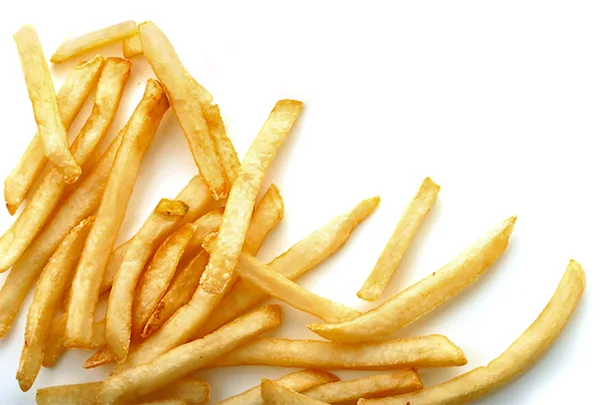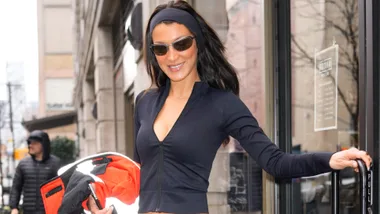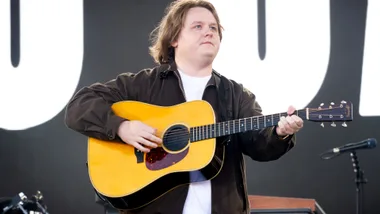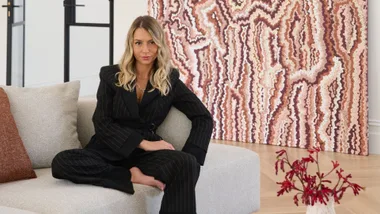When was the last time you woke up and thought, “What do I want to do today?” This was the question my friend recently posed as five of us piled into a hatchback at midday on a sweltering summer’s day. We were headed for our third baby shower in three weeks. Buried under a pile of pastel tributes in the back seat, I thought the question over.
When was the last time I did something just because I felt like it? Lately, most weekends (and a large portion of my disposable income) had been consumed by a flurry of engagement parties, hen’s nights, high teas, weddings, baby showers, naming days and kids’ birthday parties. On top of that, I spend a lot of time burning through a bunch of life chores, which, like my friends’ offspring, appear to be constantly multiplying. There’s writing and housework to do, a gym membership to use and some Sundance doco all my friends were talking about to get through.
Even the television shows I watch are often work-related or motivated by some indirect form of peer pressure (I didn’t want to be the only one not keeping up with Carrie Mathison). Everything from what I ate to how I spent my money was rooted in a vague sense of what I should be doing. What I felt like doing was something that I hadn’t given much thought.
Later that evening, staring down the start of an exhausting week, I sought the advice of my good friend (read: the internet). There, along with the obvious tips for managing time (“get up earlier!”) and the questionable (“Don’t ever go to the bathroom,” suggests former New York Mayor Michael Bloomberg) was a solution both sane and revolutionary – don’t do anything at all. Take a “should-less” day.
Unlike a lot of contemporary wisdom, “the world’s most pleasant productivity hack” – as it was dubbed by business magazine Inc. – doesn’t come from a 27-year-old Silicon Valley tech billionaire, but from octogenarian actress Ellen Burstyn. At 82, Burstyn has an Oscar and two Emmys under her belt, continues to make a few movies a year (most recently the blockbuster Interstellar), is co-president of The Actors Studio alongside Al Pacino and Harvey Keitel, and is on more boards than I care to list – so she knows a thing or two about getting stuff done.
“I have what I call ‘should-less’ days,” she said in an interview for the American podcast Death, Sex And Money. “Today is a day where there’s nothing I should do. So I only do what I want to do. And if it’s nap in the afternoon or watch TV and eat ice-cream, I get to do it.”
“I have what I call ‘should-less’ days”
Ellen Burstyn
It’s pretty hard to picture Ellen Burstyn eating from a tub of Ben & Jerry’s and watching Seinfeld reruns in her trackpants. For a start, her silver coif is so perfectly tousled you could surf in it, and she appears to travel everywhere in a soft cloud of faintly iridescent champagne scarves.
But however far removed from regular people Burstyn might appear, there’s an element to her should-less day that strikes a chord with me – and, likely, any woman over the age of 25. “I have wiring in my brain that calls me lazy if I’m not doing something,” she explained. The should-less day is a conscious effort to reject that nagging internal voice.
According to Dr Paul Atkins, Department of Psychology at Australian Catholic University, there are two kinds of “should”. “There’s the kind where we say, ‘I don’t really want to do this, but I will because I believe in its value.’ That’s generally associated with very positive outcomes.” Then there’s the kind Burstyn talks about. “This type of ‘should’ is called introjected motivation, which is when you do things because you’ll feel guilty or ashamed if you don’t. That is associated with very negative outcomes.”
Watkins chalks up the second kind to constant social comparison and our daily bombardment with images of what a successful life looks like. “Society seems to equate happiness with having more of everything. And, of course, if you want more of everything you’ve got an endless to-do list.”
So could something like this work for normal people? I resolved to find out by road-testing a should-less lifestyle for one week.
Monday
As much as I’d love to forgo work entirely, gainful employment is more a need than a “should”. However, there are plenty of other shoulds to cull from my morning. I hit snooze – twice – and make up the extra time by not washing my hair. I’ve always felt reluctant about soaping my scalp. Unlike teeth, hair won’t fall out if you fail to wash it. Clean hair has no place in my should-less week.
My day plays out the same way it usually would, only I have a burrito for lunch in place of my regular homemade salad, followed by a frozen pizza for dinner. For dessert, I eat yoghurt (not the fat-free kind) directly from the container without checking the expiry date. Now we’re really living!
Instead of going for the usual post-work run, I spend the evening sitting in the bath, drinking wine and listening to podcasts.
Tuesday
Wake up very late. On the train to work I re-listen to all the podcasts I’ve already forgotten. Wine may be good for the heart, but it does not aid short-term memory.
The prospect of a green juice and a healthy salad for lunch physically repulses me, so I follow my should-less instincts back to Mad Mex. Instead of catching up on news headlines during lunch, I read a list of “10 celebrities who are probably smarter than you”.
After work I decide I don’t want to cook even though it’s my turn, so I text my boyfriend to let him know I’ll pick something up on the way home. Food shopping without any guiding principles turns out to be more challenging than you might expect.
No fruit, no vegies and especially no kale, I promise myself. Instead, I arrive home with corn chips, tiny French pickles, cheese, chocolate pretzels, a baguette and those salami straws that are the seafood extender of the sausage world. My boyfriend is not impressed, but concedes that the chocolate pretzels are greater than the sum of their parts and go surprisingly well with pickles.
Wednesday
Halfway through the day I receive a text from a high school friend, who only ever wants to see me to complain about her husband, asking to “catch up”. No matter what the pretext, the true impetus for the rendezvous always reveals itself when she sighs halfway through her third whiskey sour that “he just doesn’t get me anymore”. I’m all for being a shoulder to cry on, but it’s nice to experience other parts of the friendship anatomy, too. I tell her I’m snowed under this week and feel a pang of guilt, followed immediately by relief.
That night, sitting at home with a glass of sangria (the box kind) and a burrito, I chat to my friend Alex on the phone about my bold new lifestyle experiment. “Aren’t you scared?” she asks. “I wouldn’t want to know what I’d be like if I stopped doing all the things we’re supposed to. I mean, what if it turns out that underneath you’re just not very nice? What if you’re like a horrible shut-in wine monster who just sits around eating burritos all day?”
I resolve to switch to sushi.
Thursday
Alex’s comment was playing on my mind. Could there be a bad way to do what you want? Perhaps other, nobler people were using their should-less days to learn French or write haiku?
I reach out to Tom Hodgkinson, founder of The Idler Academy in London and author of several books, including How To Be Idle. (He’s the busiest lazy person in the Northern hemisphere.) If anybody could give me some guidelines on living should-lessly, he was the one.
After an enthusiastic email exchange in which Hodgkinson agrees to answer some questions, the world’s foremost advocate for laziness doesn’t get back to me. I’m on my own.
Friday
By Friday I’m feeling emotionally lighter but physically heavier. (There’s a reason no-one ever uttered the words, “Everything you see, I owe to burritos.”) I don’t really want to know if I’ve gained weight, so in the spirit of the experiment I don’t bother checking.
Though I’m definitely less stressed, I’m twice as exhausted. And not doing things is less fulfilling than it was at the start of the week. I don’t even enjoy withholding “likes” from my friends’ humblebraggy Facebook posts.
I was planning to have a quiet night, but instead decide to accept a last-minute invitation to an acquaintance’s film screening. I get chatting to lots of new people and think, “This is what the should-less week is for – making space in life for new people and experiences.” The good times continue at a nearby cocktail bar.
Saturday
The good times end. Every person I know calls with an invitation to participate in some idyllic-sounding activity at a park/cafe/beach and all I can do is whimper variations of “I’m dying”. I’ve spent the entire week doing exactly as I please and now, finally, something I desperately want to do and it’s been precluded by the previous night’s wants.
I get a pizza delivered and spend the afternoon watching The Walking Dead in bed in my underpants. This brings me less joy than expected.
Sunday
I wake up early and just as I’m about to tell my friend that I won’t make our weekly trip to the farmers’ market, I realise that I actually kind of feel like cooking something. And I could almost go for a green smoothie.
In the end, not doing the things I “should” had just served to remind me of why I started doing them in the first place. Eating well, exercising, washing my hair and treating burritos as a sometimes-meal instead of their own food group – I do those things because they make me feel good.
The week had also given me a chance to distinguish between the things I did because I felt they were expected of me and the things I truly valued. What’s more, by getting rid of the former, you create space for the latter. Imagine, for instance, if everyone who hates washing their hair spent the extra 20 minutes a day doing something nice for a neighbour.
Of course, most people can’t spend a week doing exactly what they want, but what about a should-less afternoon or even a should-less hour? Sometimes all you need is a bit of distance. You should really try it.










